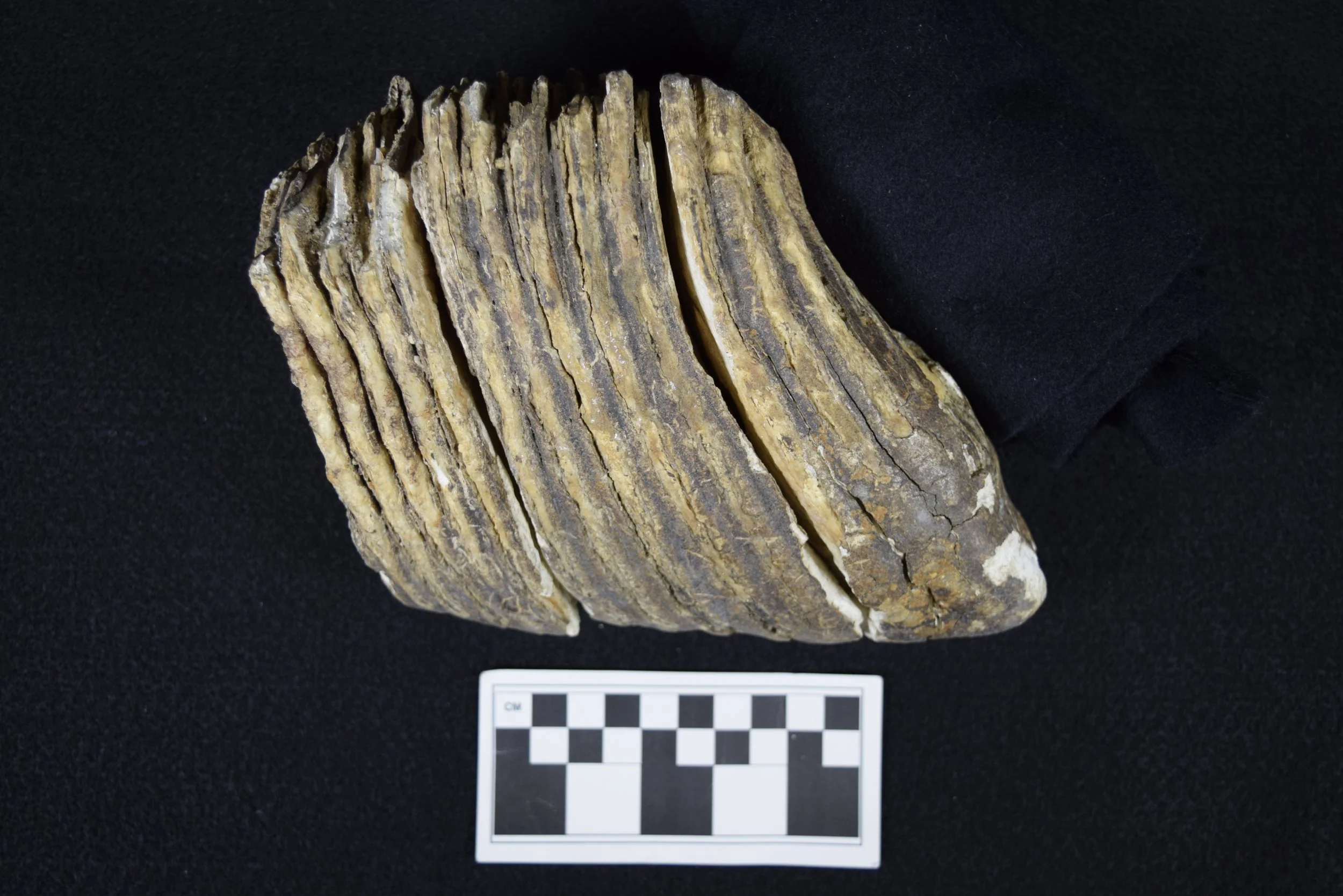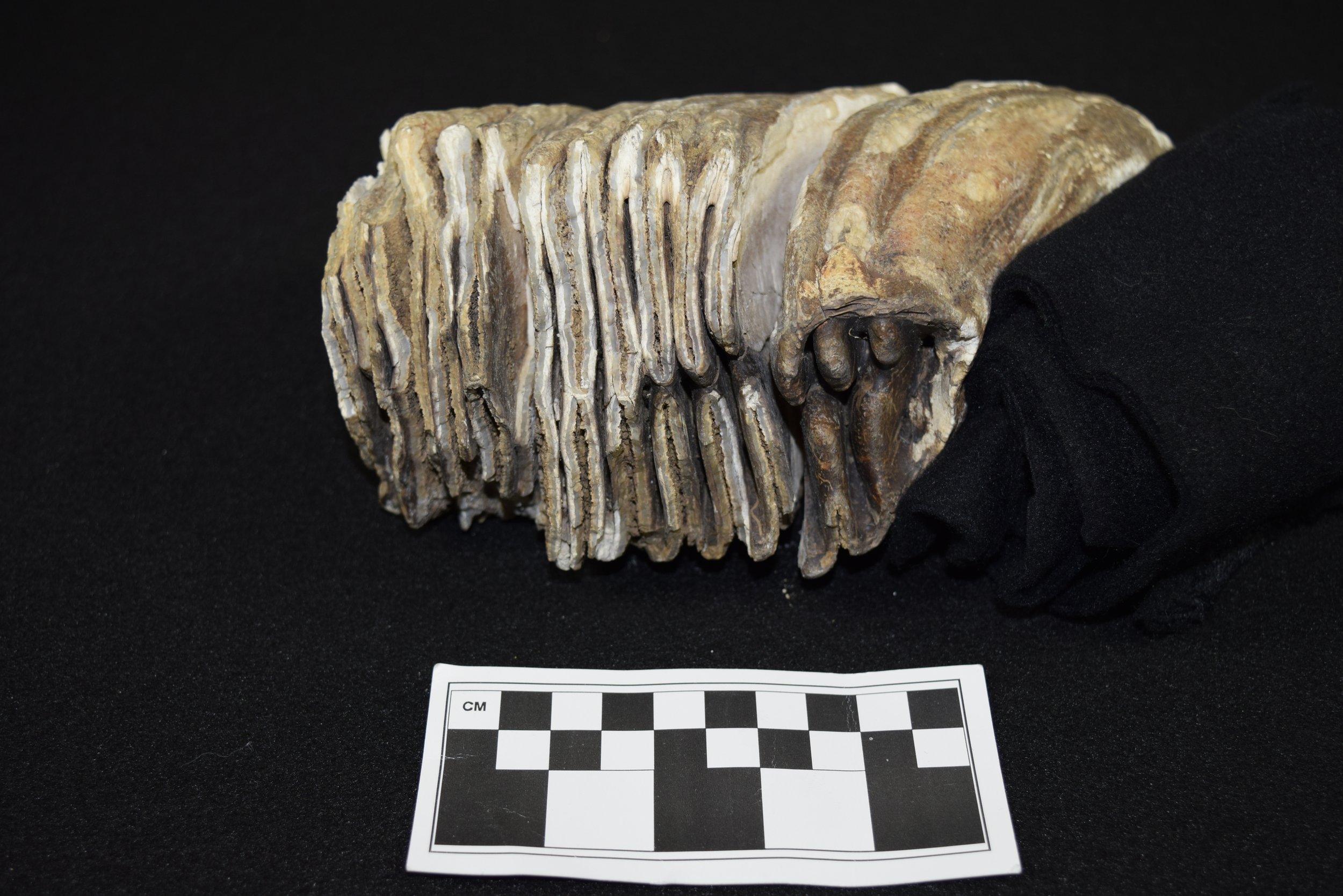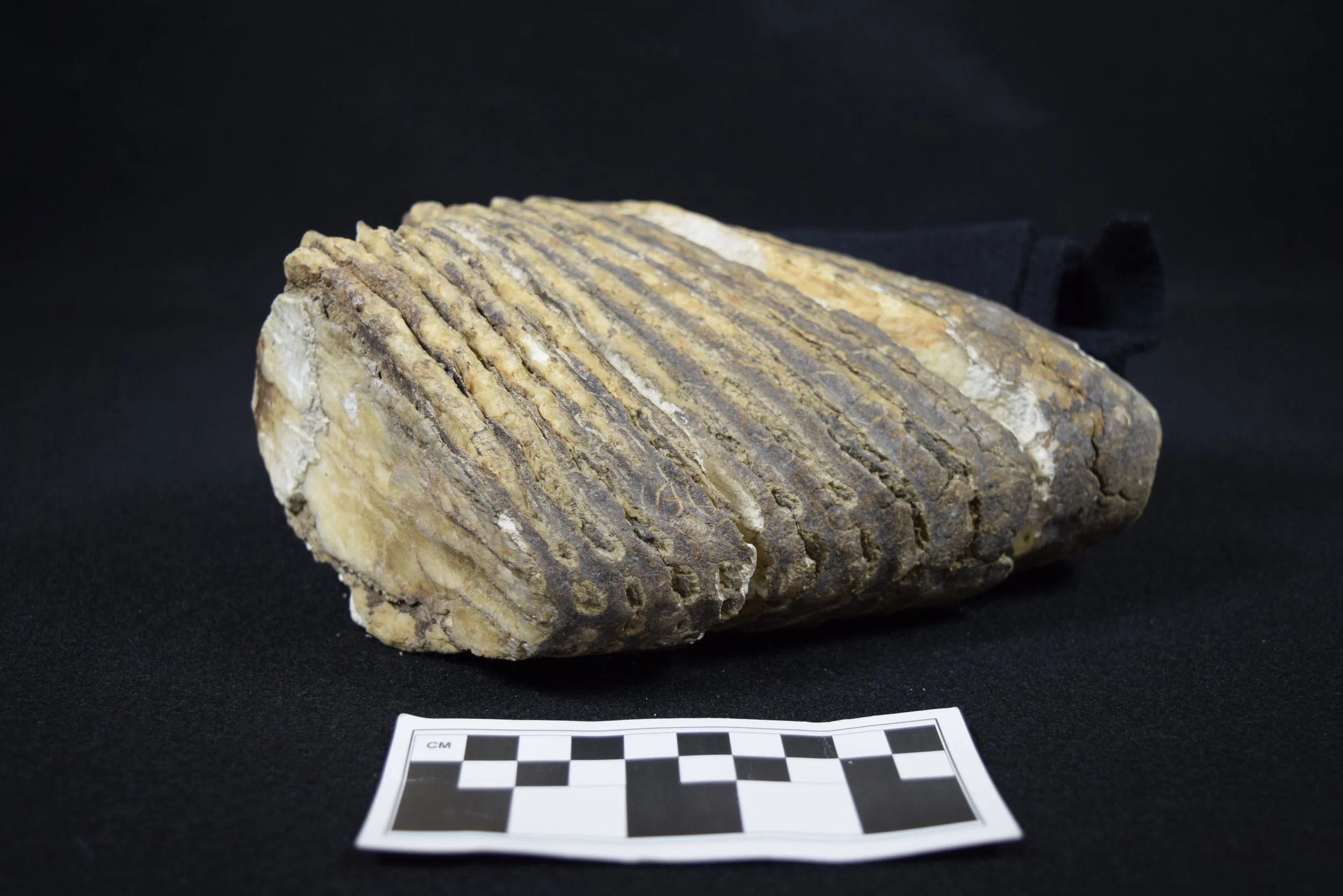That’s Quite the Tooth!
A large part of why I love curation and working in museums is the opportunity to explore history and the past through hands-on interaction with objects and records. Through this work, there are opportunities to research items from modern history to thousands of years ago.
While sorting through fossil and geology boxes in one of our storage areas, a volunteer and I recently relocated a donation from 1916 that I had only briefly read about in our old record books…a tooth from a wooly mammoth! This tooth was discovered in November of 1913 by August Platt (an early ice dealer in Baraboo), his son Harold, Julius Hass, and others while hauling gravel from near the Baraboo River in Lyons (now West Baraboo). The tooth was found not far from the current location of the SCHS History Center, four or five feet below the surface. The base of the tooth has been heavily ground, possibly from glacial and other movement over the years. It is possible the tooth may be more than 10,000 years old.
Wooly mammoths once roamed the land that is now known as Wisconsin, thousands of years ago during the Ice Age. These magnificent creatures, with their long, shaggy coats and imposing tusks, were well-suited to the cold, grassy plains that characterized the region at the time. Fossils of wooly mammoths have been found in various parts of Wisconsin, providing valuable insights into the state's prehistoric past. These massive animals, relatives of modern-day elephants, played a significant role in the ecosystem of the time, shaping the landscape and impacting other species through their grazing habits.
Wooly mammoths were massive creatures, standing up to 13 feet tall at the shoulder. They had long, shaggy hair that helped them survive in cold environments during the Ice Age. Both male and female mammoths had impressive, curved tusks that could reach up to 16 feet in length. Their ears were small and rounded to minimize heat loss in frigid climates. Wooly mammoths were known to be social animals, often traveling in herds for protection. These creatures were herbivores, feeding on grasses, shrubs, and other vegetation. Wooly mammoths were still abundant some 20,000 years ago but within 10,000 years they were reduced to isolated populations. By 4,000 years ago they were gone.
The wooly mammoth tooth shown in the photos above will go on exhibit this summer at the Van Orden Mansion, as part of our display on the early history of Sauk County. The museum will reopen for the season the first weekend of May.
We hope to see you there!





